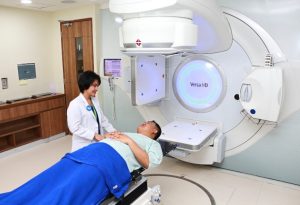A married couple who cannot conceive, despite regular unprotected intercourse for at least 12 months, are considered to have fertility issues. To diagnose the cause, further examinations are needed for both parties because infertility can be caused by male or female factors.
A complete examination begins with thorough history taking or recording general information such as the couple’s age, length of marriage, menstrual cycle, general health condition including history of diseases, and lifestyle factors like smoking, alcoholism, or other drug use.
Afterwards, we need further supportive examinations to find out the condition of the reproductive system. Here are some of the routine examinations for diagnosing infertility:
1. Ovulation Test to Assess Hormone Levels
The ability to identify the correct ovulation time is important for women expecting pregnancy. Some methods used are blood test for serum progesterone and urine test for pregnanediol 3-glukoronid, FSH hormone in urine, and monitoring of basal body temperature. For infertility evaluation, midcycle progesterone monitoring is a priority.
2. Hysterosalpingography (HSG) to Assess Tuba Condition
HSG inserts contrast media to the reproductive system through the vagina to obtain a clear vision of the tuba Falopii and uterus. If there is a tuba obstruction, it can be diagnosed and even be treated with HSG.
3. Ovarian Reserve Testing to Assess The Quality and Quantity of Eggs
Decrease in the number of eggs increases with age and is more significant after 37 years old. Therefore, an ovarian reserve test is often performed for infertility diagnosis to find out the condition of the eggs at present. Some hormonal tests are performed as stimulation and also uses ultrasound to assess ovary volume and the number of anthral follicles.
4. Pelvic Ultrasound to See The Uterus Condition
Abdomen and pelvic ultrasound are performed to obtain information on the infertility cause maybe from uterus disorder. The information that might be found are the appearance and thickness of the endometrium and shape of the uterus. From the tuba we can see if there is an enlargement or hydrosalpinx. Ovaries are also assessed for shape, size, and cysts.
5. Other hormonal tests such as thyroid and pituitary, which also affect fertility.
6. Laparoscopy if needed to find endometriosis, scars, fibroids, obstruction, or other disorders.
7. Although uncommon, a genetic test can be useful to help find out if there is a change in gene causing infertility.
For male fertility diagnosis we can perform these examinations:
1. Physical Examination
Physical examination for genitalia including the penis and testicles can find varicocele, undescended testis, infection, epididymis cyst, hydrocele, or condyloma. Digital rectal examination can also find description of the prostate.
2. Sperm Analysis
This analysis consisted of motility, morphology, and sperm concentration in the seminal fluid.
3. Genetic Test
Although it is rare, we can perform a genetic test to find out the gene mutation for infertility.
The result of the examinations can give the possible cause of infertility in both parties. Further management can be adjusted for suitable infertility therapy.
Source:
- https://www.mayoclinic.org/diseases-conditions/female-infertility/diagnosis-treatment/drc-20354313
- https://www.ncbi.nlm.nih.gov/pmc/articles/PMC5689497/
- https://academic.oup.com/humrep/article/15/3/723/2915479
- https://www.ncbi.nlm.nih.gov/pmc/articles/PMC3276943/
- https://www.ncbi.nlm.nih.gov/pmc/articles/PMC3991407/



